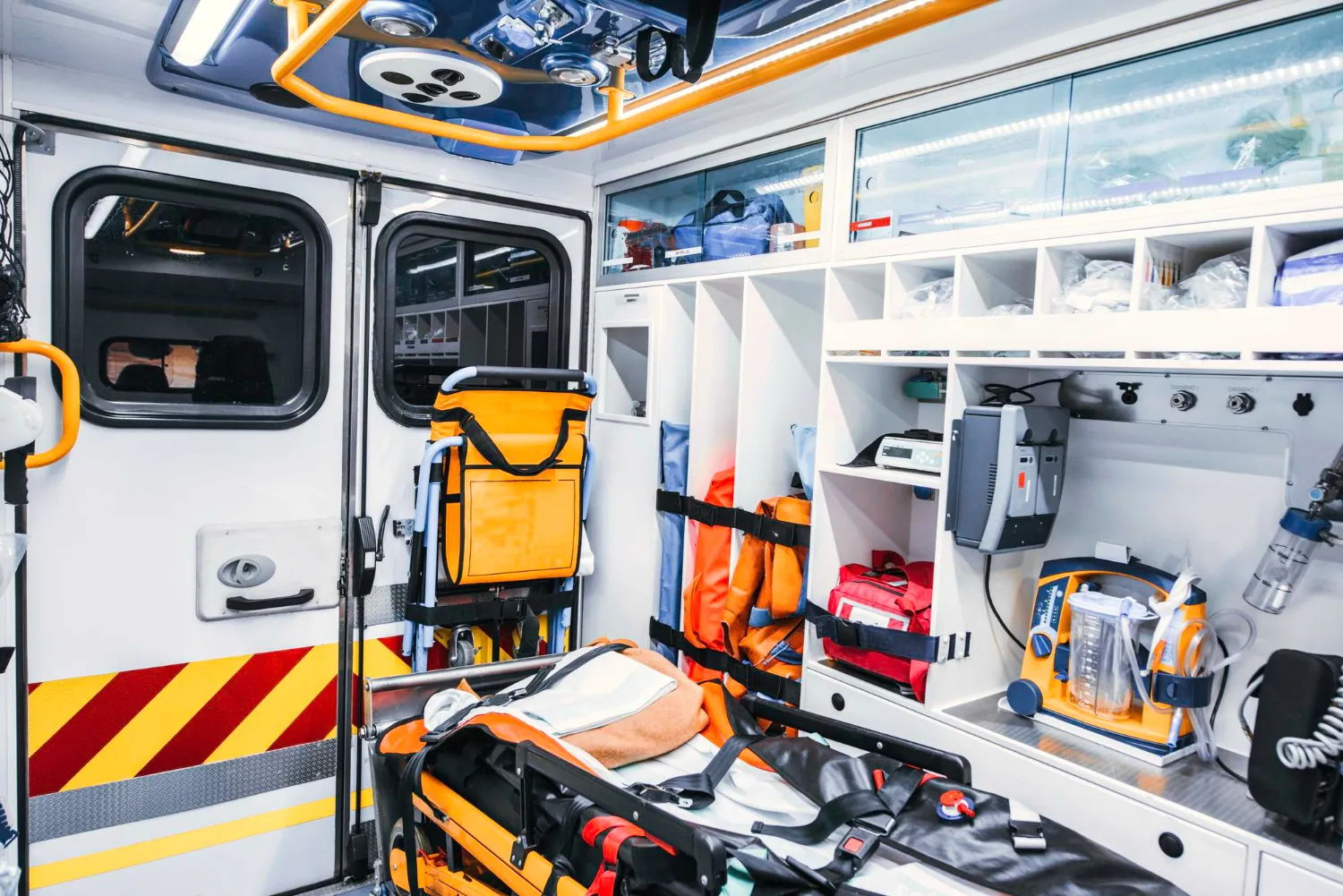Exploring the Most-Used EMT Medications

When your unit is called to an emergency, it's important to have your complete inventory stocked, but you'll want to be sure you have plenty of the most-used EMS medications on hand. Careful inventory and medication tracking are crucial across the board, especially with these lifesaving meds.
If you're wondering which medications are the most common and important, here are some top drugs most first responders need to carry and keep on hand.
The Importance of Having the Right Basic EMT Medications
First responders, like paramedics and Advanced EMTs, carry a range of medications to help address the various medical emergencies they face. The Advanced EMT (emergency medical technician) and Paramedic basic medications and dosages needed will depend on each individual's set of circumstances. Factors like medical conditions, weight and age can require different approaches. Pediatric patients have different requirements than senior patients. They're not just smaller adults, after all.
Now, of course, it's impossible to anticipate every medication or medical intervention that a patient may need but having a basic Advanced EMT and Paramedic medication list can help you do a spot check to make sure you have most of what you will need at any given time. It's not unusual for a patient to require the administration of several medications during their visit with emergency medical services, and you must have what they need (rather than calling an additional bus and delaying treatment).
The specific EMT medications and dosages will vary based on local protocols, regulations, the level of training in your unit, the scope of practice, and many other factors. Of course, it also goes without saying that only trained medical professionals are authorized to administer medications, even in emergency situations. This is also the case when an Advanced EMT or Paramedic is off duty, even if they help an EMS crew at an emergency, they are limited to BLS skills under the Good Samaritan Law.
Most controlled substances used in emergency medicine are divided into groups or "schedules" set by the DEA. For example, schedule II drugs have a higher danger of abuse or addiction and include drugs like Vicodin, hydromorphone, meperidine, oxycodone, fentanyl, and Ritalin. Whereas schedule V drugs include less restricted medications like antidiarrheals, analgesics, and antitussives.
You may not carry all different scheduled drugs on your unit, but if you carry any scheduled or controlled substances, you will need to track them carefully. The DEA requires tracking and reporting of drug information both for compliance and licensing and for the safety and protection of the patients you serve.
Careful inventory and monitoring of the basic EMT medication list are critical for safety. None of us ever want to respond to a situation, assuming we have the inventory needed and discovering that it wasn't adequately tracked, reported, or replenished. The main focus of any first responder is to stabilize the patient and keep them safe on the next step of their journey.
Advanced EMT Medications List
In EMT pharmacology, some go-to drugs are beneficial for patients in the most prevalent emergency circumstances. This EMT basic medications list explores some of the most common medications that EMS agencies and first responders may carry.
Epinephrine (Adrenaline): Used to treat severe allergic reactions (anaphylaxis) and cardiac arrest, Epinephrine is most commonly in the form of an "EpiPen" or auto-injector. The EpiPen will include a pre-measured amount that can be quickly administered. These injectors are regulated and will be subject to other prescription drug requirements, although Epinephrine isn't a scheduled drug. However, in the EMS industry, you will most often see Epinephrine in the vial or ampule form in concentrations of 1:1,000 and 1:10,000.
Naloxone: Naloxone is an opioid antagonist used as an emergency treatment for opioid overdose. It works by rapidly reversing the effects of opioids and restoring normal respiration. This drug is available in different formulations, including injectable forms, most commonly used by medical and EMS professionals, and intranasal formulas that laypersons and bystanders can administer. Many states have increased access and training to naloxone, but it's a basic EMT medication that most first responders, including law enforcement, carry. Naloxone is also commonly referred to as Narcan.
Aspirin: One of the most commonly used and widely available drugs, we might not think of aspirin (acetylsalicylic acid) in emergency response. However, it can be lifesaving when administered to patients suspected of having a heart attack to help reduce the risk of clot formation. Aspirin is an over-the-counter (OTC) medication that is widely available without a prescription and isn't classified as a scheduled drug in the United States. It's also commonly used for pain relief, reducing fever, strokes and anti-inflammatory purposes.
Albuterol: Albuterol is a bronchodilator for treating respiratory conditions such as asthma, COPD, and respiratory distress. It's often in the form of inhalers or nebulizers. Although it's not classified as a controlled substance in the United States, it is a prescription medication and will still require tracking and oversight.
Nitroglycerin: This lifesaving EMT medication is given to patients with chest pain or angina to help improve blood flow to the heart and dilate blood vessels. Nitroglycerin in its medical use is not associated with abuse potential; so while it's a prescribed medication, it's not a scheduled drug.
Glucose: Glucose is administered to individuals with low blood sugar (hypoglycemia), especially in cases of diabetes. Administering glucose helps raise blood sugar levels rapidly. EMS providers may use various forms of glucose administration, including oral glucose gel or liquid, intramuscular injections of glucagon, or intravenous administration of dextrose (a form of glucose). The choice of administration method depends on the severity of the hypoglycemia and the patient's ability to take oral medications. While glucose itself is not a controlled substance, certain formulations and medications containing glucose, such as dextrose solutions used intravenously, may be subject to regulations.
Activated Charcoal: Activated charcoal is sometimes used in EMS for the management of certain poisonings or overdoses, thanks to its ability to absorb (bind to) certain toxins in the gastrointestinal tract, preventing their absorption into the bloodstream. It's important to note that activated charcoal isn't effective for all types of poisoning, and specific protocols typically guide its use. Activated charcoal is typically administered orally, either as a liquid suspension or through a nasogastric tube.
Saline (IV Fluids): Saline, a sterile solution of sodium chloride in water, is one of the most common EMT medications used to treat dehydration and maintain blood volume in certain medical emergencies such as hypovolemia. It's used to irrigate and clean wounds, in nebulization, eye irrigation, burn care, and more. Saline is one of the most crucial medications carried by EMTs, even though it may not be something we even think of as "medication." It's vital that you track the use of saline inventory so you can replenish as needed and ensure your units always have plenty on hand. For first responders who work in areas of high trauma, saline and sodium chloride are essential for treating patients with significant bleeding injuries.
Oxygen: Yes, oxygen is considered a medication, and Emergency Medical Technicians (EMTs) commonly carry and administer oxygen in prehospital emergency care settings. Oxygen is a vital therapeutic agent for patients experiencing respiratory distress, hypoxia (low oxygen levels), or other respiratory emergencies. It can help alleviate pain and anxiety. Oxygen can be administered through various delivery devices, such as nasal cannulas, face masks, or non-rebreather masks, depending on the patient's condition and the level of oxygen support required.
Keep in mind that this list of basic EMT medications isn't exhaustive. The medication carried by first responders can vary by many factors, including local regulations, team protocol, guidelines, and best practices. Responders must also follow patient care protocols to monitor and address unexpected side effects and reactions.
Keep Track of EMT Medications and Dosages with LogRx
Your team has a lot to keep track of and a lot of responsibility. LogRx makes EMT personnel's job easier and more efficient, especially when it comes to keeping track of commonly used EMT medications and controlled substances.
Track the dispensing of medications in real-time. Your team can use their handheld devices-phones or tablets-as scanners. Point the camera at the specialized tracking labels to easily track and log inventory of scheduled and non-scheduled EMT medications. LogRx helps you avoid the hazards of paper tracking and makes reporting easy and efficient.
A tracking solution like LogRx helps you monitor inventory levels and know exactly when and where medications are dispensed. It enables you to prevent diversion and other concerns that can happen when tracking manually.
From the administrative portal dashboard, team leaders can get a complete overview of everything dispensed by your team. Reporting becomes easy and stress-free. Keep your organization protected and DEA regulation-compliant by meeting all reporting requirements.
Best of all, LogRx doesn't require extra hardware or specialized team training. Your team can access this user-friendly solution quickly, conveniently, and easily. LogRx helps you free up staff and administrative time by increasing accuracy and accountability in inventory management.
Reach out today to learn more about how LogRx can help your team treat patients safely and efficiently.
Categories
Recent Posts
- LogRx and Knox: How LogRx Integrates with EMS Medication Lockboxes
- Connecting Community and EMS: 7 EMS Community Outreach Ideas
- Projecting Professionalism: Why EMS Uniforms Matter
- EMT Off-Duty Response: What You Should Carry Everywhere
- Basic EMT Trauma Assessment Scenarios: Gearing Up for Certification


















.webp?t=1766386393821)































